Metasurfaces in Optical Biosensing: Revolutionizing Detection Techniques and Shaping the Future
Abstract
1. Introduction
2. Data Collection and Method
2.1. Statistical Analysis of Metasurface Optical Biosensors
2.1.1. Co-Authorship Analysis of Authors
2.1.2. Institutional and Country Analysis of Metasurface Optical Biosensors
2.1.3. Co-Occurrence Keyword Analysis
2.1.4. Source Citation Analysis
2.2. Principles of Metasurface Biosensing in Optical Frequency Domain
3. Advanced Fabrication Techniques
3.1. Template Transfer Methods
3.1.1. Photolithography
3.1.2. NIL Technique
3.2. Direct Wiring Methods
3.2.1. Electron Beam Lithography (EBL)
3.2.2. FIB Technique
3.2.3. DLW Technique
4. Parametric Analysis of Metasurfaces Enabling Optical Biosensing Applications
5. Conclusions and Future Scope
Funding
Institutional Review Board Statement
Informed Consent Statement
Data Availability Statement
Conflicts of Interest
Abbreviations
| FOM | Figure of Merit |
| LSPR | Localized Surface Plasmon Resonance |
| SPR | Surface Plasmon Resonance |
| IEEE | Institute of Electrical and Electronics Engineers |
| S | Sensitivity |
| LOD | Limit of Detection |
| FWHM | Full Width at Half Maximum |
| GHz | Gigahertz |
| THz | Terahertz |
| SPP | Surface Plasmon Polarization |
| RIU | Refractive Index Unit |
| NIL | Nanoimprint Lithography |
| CFL | Capillary Force Lithography |
| CVD | Chemical Vapor Deposition |
| PPL | Projection Photolithography |
| UV | Ultraviolet |
| SEM | Scanning Electron Microscope |
| EBL | Electron Beam Lithography |
| DLW | Direct Laser Writing |
| FIB | Focused Ion Beam |
| PMMA | Polymethyl Methacrylate |
| PEF | Polyethylene Furanoate |
| AFM | Atomic Force Microscopy |
| TEM | Transmission Electron Microscopy |
| CEA | Carcinoembryonic Antigen |
| PSA | Prostate-Specific Antigen |
| FL | Fluorescence |
| AIE | Aggregation-Induced Emissions |
| HSA | Human Serum Albumin |
| TPE | Tetraphenylethylene |
| RIS | Refractive Index Sensor |
| SRR | Split Ring Resonator |
| SOI | Silicon on Insulator |
References
- Cui, T.J.; Zhang, S.; Alù, A.; Wegener, M.; Pendry, S.J.; Luo, J.; Lai, Y.; Wang, Z.; Lin, X.; Chen, H.; et al. Roadmap on electromagnetic metamaterials and metasurfaces. J. Phys. Photonics 2024, 6, 032502. [Google Scholar] [CrossRef]
- Sun, J.; Zhou, J. Metamaterials: The Art in Materials Science. Engineering 2025, 44, 145–161. [Google Scholar] [CrossRef]
- Shamim, S.; Mohsin, A.S.; Rahman, M.; Bhuian, M.B.H. Recent advances in the metamaterial and metasurface-based biosensor in the gigahertz, terahertz, and optical frequency domains. Heliyon 2024, 10, e33272. [Google Scholar] [CrossRef]
- Zheng, Y.; Chen, K.; Xu, Z.; Zhang, N.; Wang, J.; Zhao, J.; Feng, Y. Metasurface-Assisted Wireless Communication with Physical Level Information Encryption. Adv. Sci. 2022, 9, e2204558. [Google Scholar] [CrossRef] [PubMed]
- Yang, B.; Zou, Y.; Zhou, K.; Liu, H.; Wu, X. TiN-based metasurface absorber for efficient solar energy harvesting. Int. J. Therm. Sci. 2023, 192, 108428. [Google Scholar] [CrossRef]
- Ding, P.; Li, M.; Tian, X.; Li, Y.; Shao, L.; Xu, K.; Huo, H.; Zeng, F.; Wang, J. Graphene metasurface for broadband, wide-angle and polarization-insensitive carpet cloak. Opt. Mater. 2021, 121, 111578. [Google Scholar] [CrossRef]
- Shen, Z.; Lin, X. A review of metasurface polarization devices. Opt. Mater. 2023, 146, 114567. [Google Scholar] [CrossRef]
- Song, Y.; Shen, Y. A metasurface radar for steering ultrasonic guided waves. J. Sound Vib. 2022, 538, 117260. [Google Scholar] [CrossRef]
- Ding, F.; Bozhevolnyi, S.I. Advances in quantum meta-optics. Mater. Today 2023, 71, 63–72. [Google Scholar] [CrossRef]
- Kim, H.; Yun, H.; Jeong, S.; Lee, S.; Cho, E.; Rho, J. Optical Metasurfaces for Biomedical Imaging and Sensing. ACS Nano 2025, 19, 3085–3114. [Google Scholar] [CrossRef]
- Zhang, S.; Wong, C.L.; Zeng, S.; Bi, R.; Tai, K.; Dholakia, K.; Olivo, M. Metasurfaces for biomedical applications: Imaging and sensing from a nanophotonics perspective. Front. Opt. Photonics 2021, 10, 265–299. [Google Scholar]
- Kumar, S.; Singh, H. A Comprehensive Review of Metamaterials/Metasurface-Based MIMO Antenna Array for 5G Millimeter-Wave Applications. J. Supercond. Nov. Magn. 2022, 35, 3025–3049. [Google Scholar] [CrossRef]
- Uniyal, A.; Srivastava, G.; Pal, A.; Taya, S.; Muduli, A. Recent Advances in Optical Biosensors for Sensing Applications: A Review. Plasmonics 2023, 18, 735–750. [Google Scholar] [CrossRef]
- Shrivastav, A.M.; Cvelbar, U.; Abdulhalim, I. A comprehensive review on plasmonic-based biosensors used in viral diagnostics. Commun. Biol. 2021, 4, 70. [Google Scholar] [CrossRef] [PubMed]
- Shrikrishna, N.S.; Sharma, R.; Sahoo, J.; Kaushik, A.; Gandhi, S. Navigating the landscape of optical biosensors. Chem. Eng. J. 2024, 490, 151661. [Google Scholar] [CrossRef]
- Akgönüllü, S.; Denizli, A. Recent advances in optical biosensing approaches for biomarkers detection. Biosens. Bioelectron. X 2022, 12, 100269. [Google Scholar] [CrossRef]
- Zhang, Z.; Shi, H.; Wang, L.; Chen, J.; Chen, X.; Yi, J.; Zhang, A.; Liu, H. Recent Advances in Reconfigurable Metasurfaces: Principle and Applications. Nanomaterials 2023, 13, 534. [Google Scholar] [CrossRef]
- Qin, J.; Jiang, S.; Wang, Z.; Cheng, X.; Li, B.; Shi, Y.; Tsai, D.P.; Liu, A.Q.; Huang, W.; Zhu, W. Metasurface Micro/Nano-Optical Sensors: Principles and Applications. ACS Nano 2022, 16, 11598–11618. [Google Scholar] [CrossRef]
- Damborský, P.; Švitel, J.; Katrlík, J. Optical biosensors. Essays Biochem. 2016, 60, 91–100. [Google Scholar] [CrossRef]
- Das, S.; Devireddy, R.; Gartia, M.R. Surface Plasmon Resonance (SPR) Sensor for Cancer Biomarker Detection. Biosensors 2023, 13, 396. [Google Scholar] [CrossRef]
- Hao, X.; St-Pierre, J.-P.; Zou, S.; Cao, X. Localized surface plasmon resonance biosensor chip surface modification and signal amplifications toward rapid and sensitive detection of COVID-19 infections. Biosens. Bioelectron. 2023, 236, 115421. [Google Scholar] [CrossRef]
- Singh, A.K.; Mittal, S.; Das, M.; Saharia, A.; Tiwari, M. Optical biosensors: A decade in review. Alex. Eng. J. 2023, 67, 673–691. [Google Scholar] [CrossRef]
- Bekmurzayeva, A.; Nurlankyzy, M.; Abdossova, A.; Myrkhiyeva, Z.; Tosi, D. All-fiber label-free optical fiber biosensors: From modern technologies to current applications [Invited]. Biomed. Opt. Express 2024, 15, 1453–1473. [Google Scholar] [CrossRef] [PubMed]
- Lv, J.; Wang, J.; Yang, L.; Liu, W.; Fu, H.; Chu, P.K.; Liu, C. Recent advances of optical fiber biosensors based on surface plasmon resonance: Sensing principles, structures, and prospects. Sensors Diagn. 2024, 3, 1369–1391. [Google Scholar] [CrossRef]
- Janith, G.; Herath, H.; Hendeniya, N.; Attygalle, D.; Amarasinghe, D.; Logeeshan, V.; Wickramasinghe, P.; Wijayasinghe, Y. Advances in surface plasmon resonance biosensors for medical diagnostics: An overview of recent developments and techniques. J. Pharm. Biomed. Anal. Open 2023, 2, 100019. [Google Scholar] [CrossRef]
- Ding, R.; Chen, Y.; Wang, Q.; Wu, Z.; Zhang, X.; Li, B.; Lin, L. Recent advances in quantum dots-based biosensors for antibiotics detection. J. Pharm. Anal. 2022, 12, 355–364. [Google Scholar] [CrossRef]
- Altug, H.; Oh, S.-H.; Maier, S.A.; Homola, J. Advances and applications of nanophotonic biosensors. Nat. Nanotechnol. 2022, 17, 5–16. [Google Scholar] [CrossRef]
- Aghlara, H.; Rostami, R.; Maghoul, A.; SalmanOgli, A. Noble metal nanoparticle surface plasmon resonance in absorbing medium. Optik 2015, 126, 417–420. [Google Scholar] [CrossRef]
- Bankole, O.E.; Verma, D.K.; González, M.L.C.; Ceferino, J.G.; Sandoval-Cortés, J.; Aguilar, C.N. Recent trends and technical advancements in biosensors and their emerging applications in food and bioscience. Food Biosci. 2022, 47, 101695. [Google Scholar] [CrossRef]
- Naresh, V.; Lee, N. A review on biosensors and recent development of nanostructured materials-enabled biosensors. Sensors 2021, 21, 1109. [Google Scholar] [CrossRef]
- Perumal, V.; Hashim, U. Advances in biosensors: Principle, architecture and applications. J. Appl. Biomed. 2014, 12, 1–15. [Google Scholar] [CrossRef]
- Ghosh, S.; Sagayam, K.M.; Haldar, D.; Jone, A.A.A.; Acharya, B.; Gerogiannis, V.C.; Kanavos, A. A review on the types of nanomaterials and methodologies used for the development of biosensors. Adv. Nat. Sci. Nanosci. Nanotechnol. 2024, 15, 013001. [Google Scholar] [CrossRef]
- Granizo, E.; Samokhvalov, P.; Nabiev, I. Functionalized Optical Microcavities for Sensing Applications. Nanomaterials 2025, 15, 206. [Google Scholar] [CrossRef]
- Rheima, A.M.; Al-Sharify, Z.T.; Mohaimeed, A.A.; Kazem, M.A.A.H.; Dhabab, J.M.; Athair, D.M.; Joseph, T.M.; Mahapatra, D.K.; Thomas, S.; Kianfar, E. Nano biosensors: Classification, electrochemistry, nanostructures, and optical properties. Results Eng. 2024, 24, 103428. [Google Scholar] [CrossRef]
- Abdel-Karim, R. Nanotechnology-Enabled Biosensors: A Review of Fundamentals, Materials, Applications, Challenges, and Future Scope. Biomed. Mater. Devices 2024, 2, 759–777. [Google Scholar] [CrossRef]
- Kumar, S.; Singh, H.; Feder-Kubis, J.; Nguyen, D.D. Recent advances in nanobiosensors for sustainable healthcare applications: A systematic literature review. Environ. Res. 2023, 238, 117177. [Google Scholar] [CrossRef]
- Herrera-Domínguez, M.; Morales-Luna, G.; Mahlknecht, J.; Cheng, Q.; Aguilar-Hernández, I.; Ornelas-Soto, N. Optical Biosensors and Their Applications for the Detection of Water Pollutants. Biosensors 2023, 13, 370. [Google Scholar] [CrossRef]
- Özkan, S.A.; Uslu, B.; Sezgintürk, M.K. Biosensors: Fundamentals, Emerging Technologies, and Applications; CRC Press: Boca Raton, FL, USA, 2022; Volume 16. [Google Scholar]
- Genevet, P.; Capasso, F.; Aieta, F.; Khorasaninejad, M.; Devlin, R. Recent advances in planar optics: From plasmonic to dielectric metasurfaces. Optica 2017, 4, 139–152. [Google Scholar] [CrossRef]
- Wang, Y.; Zhu, D.; Cui, Z.; Hou, L.; Lin, L.; Qu, F.; Liu, X.; Nie, P. All-Dielectric Terahertz Plasmonic Metamaterial Absorbers and High-Sensitivity Sensing. ACS Omega 2019, 4, 18645–18652. [Google Scholar] [CrossRef]
- Kazanskiy, N.L.; Khonina, S.N.; Butt, M.A. Recent Development in Metasurfaces: A Focus on Sensing Applications. Nanomaterials 2023, 13, 118. [Google Scholar] [CrossRef]
- Kabashin, A.V.; Evans, P.; Pastkovsky, S.; Hendren, W.; Wurtz, G.A.; Atkinson, R.; Pollard, R.; Podolskiy, V.A.; Zayats, A.V. Plasmonic nanorod metamaterials for biosensing. Nat. Mater. 2009, 8, 867–871. [Google Scholar] [CrossRef] [PubMed]
- Sharma, S.; Kumari, R.; Varshney, S.K.; Lahiri, B. Optical biosensing with electromagnetic nanostructures. Rev. Phys. 2020, 5, 100044. [Google Scholar] [CrossRef]
- Tseng, M.L.; Jahani, Y.; Leitis, A.; Altug, H. Dielectric Metasurfaces Enabling Advanced Optical Biosensors. ACS Photon 2021, 8, 47–60. [Google Scholar] [CrossRef]
- Song, H.-J.; Lee, N. Terahertz Communications: Challenges in the Next Decade. IEEE Trans. Terahertz Sci. Technol. 2022, 12, 105–117. [Google Scholar] [CrossRef]
- Farhad, A.; Pyun, J.-Y. Terahertz Meets AI: The State of the Art. Sensors 2023, 23, 5034. [Google Scholar] [CrossRef]
- Hamza, M.E.; Othman, M.A.; Swillam, M.A. Plasmonic Biosensors: Review. Biology 2022, 11, 621. [Google Scholar] [CrossRef]
- Xu, J.; Zhang, P.; Chen, Y. Surface Plasmon Resonance Biosensors: A Review of Molecular Imaging with High Spatial Resolution. Biosensors 2024, 14, 84. [Google Scholar] [CrossRef]
- Meher, P.R.; Cholleti, A.R.; Mishra, S.K. State-of-the-Art of Nanoantenna Designs in Infrared and Visible Regions: An Application-Oriented Review. IETE Tech. Rev. 2023, 40, 671–693. [Google Scholar] [CrossRef]
- Awasthi, V.; Goel, R.; Agarwal, S.; Rai, P.; Dubey, S.K. Optical nanoantenna for beamed and surface-enhanced Raman spectroscopy. J. Raman Spectrosc. 2020, 51, 2121–2145. [Google Scholar] [CrossRef]
- Mehrotra, P. Biosensors and their applications—A review. J. Oral Biol. Craniofacial Res. 2016, 6, 153–159. [Google Scholar] [CrossRef]
- Ramesh, M.; Janani, R.; Deepa, C.; Rajeshkumar, L. Nanotechnology-Enabled Biosensors: A Review of Fundamentals, Design Principles, Materials, and Applications. Biosensors 2023, 13, 40. [Google Scholar] [CrossRef]
- Mcoyi, M.P.; Mpofu, K.T.; Sekhwama, M.; Mthunzi-Kufa, P. Developments in Localized Surface Plasmon Resonance. Plasmonics 2024, 2024, 1–40. [Google Scholar] [CrossRef]
- Nanda, B.P.; Rani, P.; Paul, P.; Aman; Ganti, S.S.; Bhatia, R. Recent Trends and Impact of Localized Surface Plasmon Resonance (LSPR) and Surface-Enhanced Raman Spectroscopy (SERS) in Modern Analysis. J. Pharm. Anal. 2024, 14, 100959. [Google Scholar] [CrossRef] [PubMed]
- Zhang, H.; Zhou, X.; Li, X.; Gong, P.; Zhang, Y.; Zhao, Y. Recent Advancements of LSPR Fiber-Optic Biosensing: Combination Methods, Structure, and Prospects. Biosensors 2023, 13, 405. [Google Scholar] [CrossRef]
- Kumar, S.; Bhushan, P.; Bhattacharya, S. Fabrication of Nanostructures with Bottom-up Approach and Their Utility in Diagnostics, Therapeutics, and Others. In Energy, Environment, and Sustainability; Springer Nature: Singapore, 2018; pp. 167–198. [Google Scholar]
- Ali, A.; Mitra, A.; Aïssa, B. Metamaterials and Metasurfaces: A Review from the Perspectives of Materials, Mechanisms and Advanced Metadevices. Nanomaterials 2022, 12, 1027. [Google Scholar] [CrossRef] [PubMed]
- Thanner, C.; Eibelhuber, M. UV nanoimprint lithography: Geometrical impact on filling properties of nanoscale patterns. Nanomaterials 2021, 11, 822. [Google Scholar] [CrossRef]
- Manawi, Y.M.; Ihsanullah; Samara, A.; Al-Ansari, T.; Atieh, M.A. A review of carbon nanomaterials’ synthesis via the chemical vapor deposition (CVD) method. Materials 2018, 11, 822. [Google Scholar] [CrossRef]
- Lee, T.; Lee, C.; Oh, D.K.; Badloe, T.; Ok, J.G.; Rho, J. Scalable and high-throughput top-down manufacturing of optical metasurfaces. Sensors 2020, 20, 4108. [Google Scholar] [CrossRef]
- Yoon, G.; Kim, I.; Rho, J. Challenges in fabrication towards realization of practical metamaterials. Microelectron. Eng. 2016, 163, 7–20. [Google Scholar] [CrossRef]
- Ostmann, S.; Kähler, C.J. A simple projection photolithography method for low-cost rapid prototyping of microfluidic chips. Microfluid. Nanofluidics 2022, 26, 24. [Google Scholar] [CrossRef]
- Gonidec, M.; Hamedi, M.M.; Nemiroski, A.; Rubio, L.M.; Torres, C.; Whitesides, G.M. Fabrication of Nonperiodic Metasurfaces by Microlens Projection Lithography. Nano Lett. 2016, 16, 4125–4132. [Google Scholar] [CrossRef] [PubMed]
- Alnakhli, Z.; Liu, Z.; AlQatari, F.; Cao, H.; Li, X. UV-assisted nanoimprint lithography: The impact of the loading effect in silicon on nanoscale patterns of metalens. Nanoscale Adv. 2024, 6, 2954–2967. [Google Scholar] [CrossRef]
- Stokes, K.; Clark, K.; Odetade, D.; Hardy, M.; Oppenheimer, P.G. Advances in lithographic techniques for precision nanostructure fabrication in biomedical applications. Nanoscale Res. Lett. 2023, 18, 153. [Google Scholar] [CrossRef] [PubMed]
- Riccio, C.; Civera, M.; Ruiz, O.G.; Pedullà, P.; Reinoso, M.R.; Tommasi, G.; Vollaro, M.; Burgio, V.; Surace, C. Effects of Curing on Photosensitive Resins in SLA Additive Manufacturing. Appl. Mech. 2021, 2, 942–955. [Google Scholar] [CrossRef]
- Zhu, C.; Ekinci, H.; Pan, A.; Cui, B.; Zhu, X. Electron beam lithography on nonplanar and irregular surfaces. Microsystems Nanoeng. 2024, 10, 52. [Google Scholar] [CrossRef]
- Pinheiro, T.; Morais, M.; Silvestre, S.; Carlos, E.; Coelho, J.; Almeida, H.V.; Barquinha, P.; Fortunato, E.; Martins, R. Direct Laser Writing: From Materials Synthesis and Conversion to Electronic Device Processing. Adv. Mater. 2024, 36, e2402014. [Google Scholar] [CrossRef] [PubMed]
- Mosberg, A.B.; Ren, D.; Ahtapodov, L.; Weman, H.; Fimland, B.-O.; van Helvoort, A.T.J. Focused ion beam lithography for position-controlled nanowire growth. Nanotechnology 2023, 34, 335301. [Google Scholar] [CrossRef]
- Han, T.; Kundu, S.; Nag, A.; Xu, Y. 3D printed sensors for biomedical applications: A review. Sensors 2019, 19, 1706. [Google Scholar] [CrossRef]
- Khosravani, M.R.; Reinicke, T. 3D-printed sensors: Current progress and future challenges. Sens. Actuators A Phys. 2020, 305, 111916. [Google Scholar] [CrossRef]
- Palmara, G.; Frascella, F.; Roppolo, I.; Chiappone, A.; Chiadò, A. Functional 3D printing: Approaches and bioapplications. Biosens. Bioelectron. 2021, 175, 112849. [Google Scholar] [CrossRef]
- Remaggi, G.; Zaccarelli, A.; Elviri, L. 3D Printing Technologies in Biosensors Production: Recent Developments. Chemosensors 2022, 10, 65. [Google Scholar] [CrossRef]
- Jung, C.; Kim, G.; Jeong, M.; Jang, J.; Dong, Z.; Badloe, T.; Yang, J.K.W.; Rho, J. Metasurface-Driven Optically Variable Devices. Chem. Rev. 2021, 121, 13013–13050. [Google Scholar] [CrossRef] [PubMed]
- Tan, Y.S.; Wang, H.; Wang, H.; Pan, C.; Yang, J.K.W. High-throughput fabrication of large-scale metasurfaces using electron-beam lithography with SU-8 gratings for multilevel security printing. Photon Res. 2023, 11, B103–B110. [Google Scholar] [CrossRef]
- Yoon, G.; Tanaka, T.; Zentgraf, T.; Rho, J. Recent progress on metasurfaces: Applications and fabrication. J. Phys. D Appl. Phys. 2021, 54, 383002. [Google Scholar] [CrossRef]
- Chen, Y.F. Nanofabrication by electron beam lithography and its applications: A review. Microelectron. Eng. 2015, 135, 57–72. [Google Scholar] [CrossRef]
- Al Hasan, M.; Ullah, Z.; Nawi, I.; Ben Mabrouk, I. Fabrication of a large scale metasurface with high resolution and enhanced absorption. Opt. Mater. Express 2023, 13, 130–141. [Google Scholar] [CrossRef]
- Mote, R.G. Fabrication and structure manipulation at nanoscale—A focused ion beam (FIB) approach. Compr. Mater. Process. 2024, 16, 205–218. [Google Scholar]
- Mandal, R.; Chowdhury, K.; Halder, S. Focused ion beam technique for micro/nanoscale fabrication: Progress over the last decade. Compr. Mater. Process. 2024, 6, 536–546. [Google Scholar] [CrossRef]
- Mura, F.; Cognigni, F.; Ferroni, M.; Morandi, V.; Rossi, M. Advances in Focused Ion Beam Tomography for Three-Dimensional Characterization in Materials Science. Materials 2023, 16, 5808. [Google Scholar] [CrossRef]
- Li, P.; Chen, S.; Dai, H.; Yang, Z.; Chen, Z.; Wang, Y.; Chen, Y.; Peng, W.; Shan, W.; Duan, H. Recent advances in focused ion beam nanofabrication for nanostructures and devices: Fundamentals and applications. Nanoscale 2021, 13, 1529–1565. [Google Scholar] [CrossRef]
- Liu, Z.; Du, H.; Li, Z.-Y.; Fang, N.X.; Li, J. Invited Article: Nano-kirigami metasurfaces by focused-ion-beam induced close-loop transformation. APL Photonics 2018, 3, 100803. [Google Scholar] [CrossRef]
- Iba, A.; Ikeda, M.; Mag-Usara, V.K.; Agulto, V.C.; Nakajima, M. Sub-Diffraction Focusing Using Metamaterial-Based Terahertz Super-Oscillatory Lens. Appl. Sci. 2022, 12, 12770. [Google Scholar] [CrossRef]
- Zhang, B.; Huang, X.; Chen, G.; Wang, Z.; Qian, W.; Zhang, Z.; Cai, W.; Du, K.; Zhou, C.; Wang, T.; et al. Laser direct writing graphene assembly film for realizing plasmon-induced transparency at terahertz region. Opt. Laser Technol. 2023, 164, 109431. [Google Scholar] [CrossRef]
- Hao, D.; Liu, J.; Zou, P.; Zhang, Y.; Moro, R.; Ma, L. All-dielectric Metasurfaces and Their Applications in the Terahertz Range. Laser Photonics Rev. 2024, 18, 18–37. [Google Scholar] [CrossRef]
- Yilmaz, B.; Al Rashid, A.; Mou, Y.A.; Evis, Z.; Koç, M. Bioprinting: A review of processes, materials and applications. Bioprinting 2021, 23, e00148. [Google Scholar] [CrossRef]
- Harley, W.S.; Li, C.C.; Toombs, J.; O’Connell, C.D.; Taylor, H.K.; Heath, D.E.; Collins, D.J. Advances in biofabrication techniques towards functional bioprinted heterogeneous engineered tissues: A comprehensive review. Bioprinting 2021, 23, e00147. [Google Scholar] [CrossRef]
- Bochek, D.; Samusev, K.; Yavsin, D.; Zhukov, M.; Limonov, M.; Rybin, M.; Shishkin, I.; Sinelnik, A. Fabrication of Ge2Sb2Te5 metasurfaces by direct laser writing technique. Opt. Laser Technol. 2021, 141, 107124. [Google Scholar] [CrossRef]
- Lyu, S.; Wu, Z.; Shi, X.; Wu, Q. Optical Fiber Biosensors for Protein Detection: A Review. Photonics 2022, 9, 987. [Google Scholar] [CrossRef]
- Kazanskiy, N.L.; Khonina, S.N.; Butt, M.A. Advancement in Silicon Integrated Photonics Technologies for Sensing Applications in Near-Infrared and Mid-Infrared Region: A Review. Photonics 2022, 9, 331. [Google Scholar] [CrossRef]
- Anitha, V.; Beohar, A.; Nella, A. THz imaging technology trends and wide variety of applications: A detailed survey. Plasmonics 2023, 18, 441–483. [Google Scholar] [CrossRef]
- Kumar, S.; Wang, Z.; Zhang, W.; Liu, X.; Li, M.; Li, G.; Zhang, B.; Singh, R. Optically Active Nanomaterials and Its Biosensing Applications—A Review. Biosensors 2023, 13, 85. [Google Scholar] [CrossRef] [PubMed]
- Zhao, Y.; Hou, Z.; Yan, B.; Cao, X.; Su, B.; Lv, M.; Cui, H.; Zhang, C. Research on Drug Efficacy using a Terahertz Metasurface Microfluidic Biosensor Based on Fano Resonance Effect. ACS Appl. Mater. Interfaces 2024, 16, 52092–52103. [Google Scholar] [CrossRef] [PubMed]
- Tan, C.; Wang, S.; Li, S.; Liu, X.; Wei, J.; Zhang, G.; Ye, H. Cancer Diagnosis Using Terahertz-Graphene-Metasurface-Based Biosensor with Dual-Resonance Response. Nanomaterials 2022, 12, 3889. [Google Scholar] [CrossRef]
- Aldhaeebi, M.A.; Almoneef, T.; Bamatraf, S.; Aldhaibain, A.; Bakhalah, O.; Alhdad, S.; Bakhalah, S.; Saleem, M.K. Near-field metasurface sensor for an early-stage breast cancer detection. Sens. Int. 2025, 6, 100305. [Google Scholar] [CrossRef]
- Patel, S.K.; Wekalao, J.; Albargi, H.B.; Jalalah, M.; Almawgani, A.H.M.; Armghan, A. Design and Simulation of Metasurface-Enhanced Graphene Biosensors for Cancer Biomarker Detection. Plasmonics 2024, 19, 3119–3130. [Google Scholar] [CrossRef]
- Patel, S.K.; Surve, J.; Parmar, J. Detection of cancer with graphene metasurface-based highly efficient sensors. Diam. Relat. Mater. 2022, 129, 109367. [Google Scholar] [CrossRef]
- Iwanaga, M. All-Dielectric Metasurface Fluorescence Biosensors for High-Sensitivity Antibody/Antigen Detection. ACS Nano 2020, 14, 17458–17467. [Google Scholar] [CrossRef]
- Mostufa, S.; Yari, P.; Rezaei, B.; Xu, K.; Sun, J.; Shi, Z.; Wu, K. Metamaterial as perfect absorber for high sensitivity refractive index based biosensing applications at infrared frequencies. J. Phys. D Appl. Phys. 2023, 56, 445104. [Google Scholar] [CrossRef]
- Hu, Q.; Iwanaga, M.; Tang, Y. Metasurface Platform Incorporating Aggregation Induced Emission Based Biosensor for Enhanced Human Serum Albumin Detection. Adv. Opt. Mater. 2024, 12, 2400868. [Google Scholar] [CrossRef]
- Khan, G.A.; Lu, Y.; Wang, P. Plasmon-Enhanced Refractive Index Sensing of Biomolecules Based on Metal–Dielectric–Metal Metasurface in the Infrared Regime. ACS Omega 2023, 9, 1416–1423. [Google Scholar] [CrossRef]
- Tabatabaeian, Z.S.; Kazemi, F.; Ebrahimi, S. Plasmonic fractal Metasurface with Fano response for virus detection in the optical spectrum. Opt. Mater. 2024, 150, 115153. [Google Scholar] [CrossRef]
- Patel, S.K.; Surve, J.; Parmar, J.; Aliqab, K.; Alsharari, M.; Armghan, A. SARS-CoV-2 detecting rapid metasurface-based sensor. Diam. Relat. Mater. 2023, 132, 109644. [Google Scholar] [CrossRef] [PubMed]
- Yin, X. Effective optical biosensing using a graphene-based metasurface of asymmetric split silicon bars. Optik 2023, 287, 171047. [Google Scholar] [CrossRef]
- Gao, J.; Zhang, N.; Ji, D.; Song, H.; Liu, Y.; Zhou, L.; Sun, Z.; Jornet, J.M.; Thompson, A.C.; Collins, R.L.; et al. Superabsorbing Metasurfaces with Hybrid Ag–Au Nanostructures for Surface-Enhanced Raman Spectroscopy Sensing of Drugs and Chemicals. Small Methods 2018, 2, 1800045. [Google Scholar] [CrossRef]
- Kumar, S.; Singh, H.; Singh, H.; Soni, H.; Bechelany, M.; Singh, J. Extraction of Metallic Nanoparticles from Electronic Waste for Biomedical Applications: Pioneering Sustainable Technological Progress. Sustainability 2025, 17, 2100. [Google Scholar] [CrossRef]
- Almawgani, A.H.M.; Surve, J.; Parmar, T.; Armghan, A.; Aliqab, K.; Ali, G.A.; Patel, S.K. A Graphene-Metasurface-Inspired Optical Sensor for the Heavy Metals Detection for Efficient and Rapid Water Treatment. Photonics 2023, 10, 56. [Google Scholar] [CrossRef]
- Iwanaga, M. Robust Detection of Cancer Markers in Human Serums Using All-Dielectric Metasurface Biosensors. Biosensors 2023, 13, 377. [Google Scholar] [CrossRef]
- Chen, J.; Hu, F.; Lin, S.; Song, Z.; Duan, Z.; Zhang, L.; Jiang, M. Hybridization chain reaction assisted terahertz metamaterial biosensor for highly sensitive detection of microRNAs. Spectrochim. Acta Part A Mol. Biomol. Spectrosc. 2024, 307, 123646. [Google Scholar] [CrossRef]
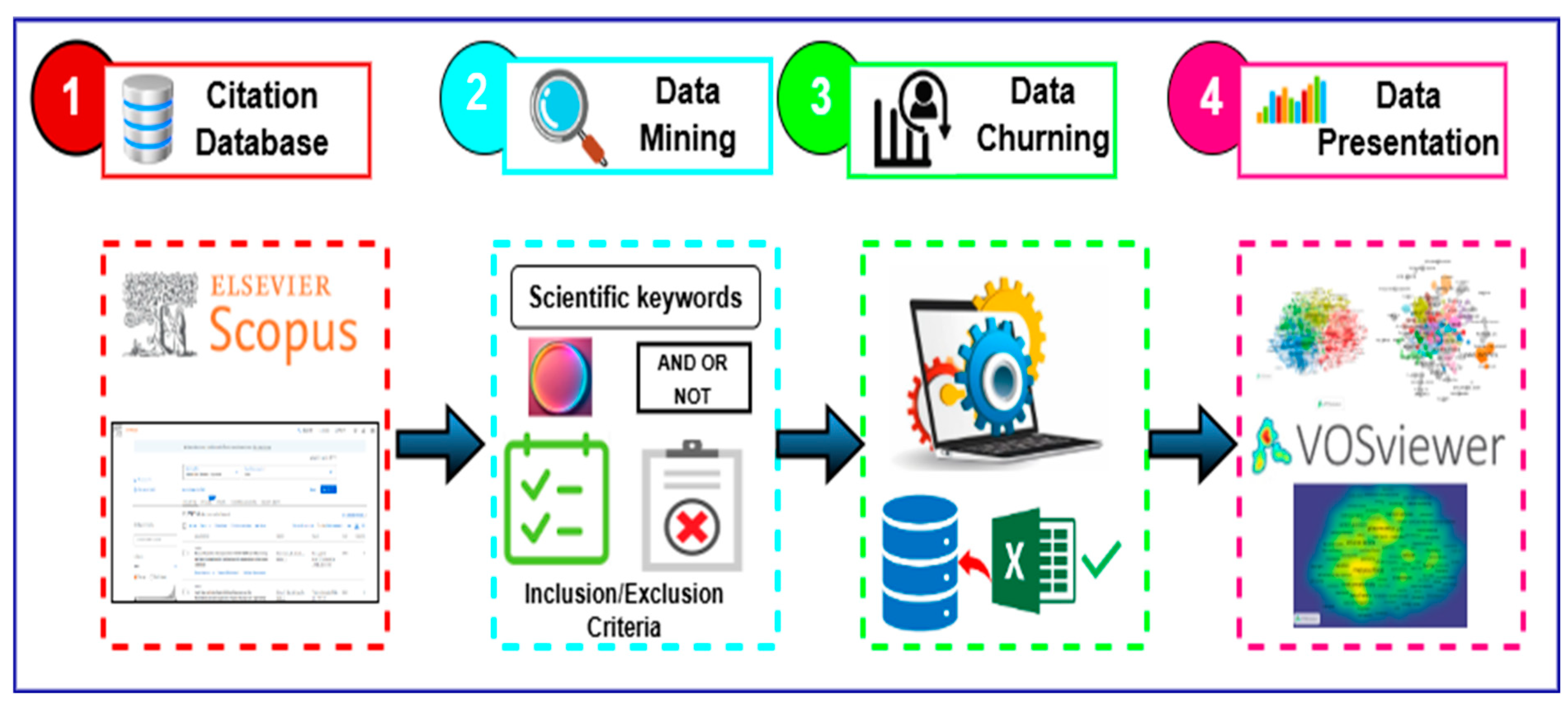
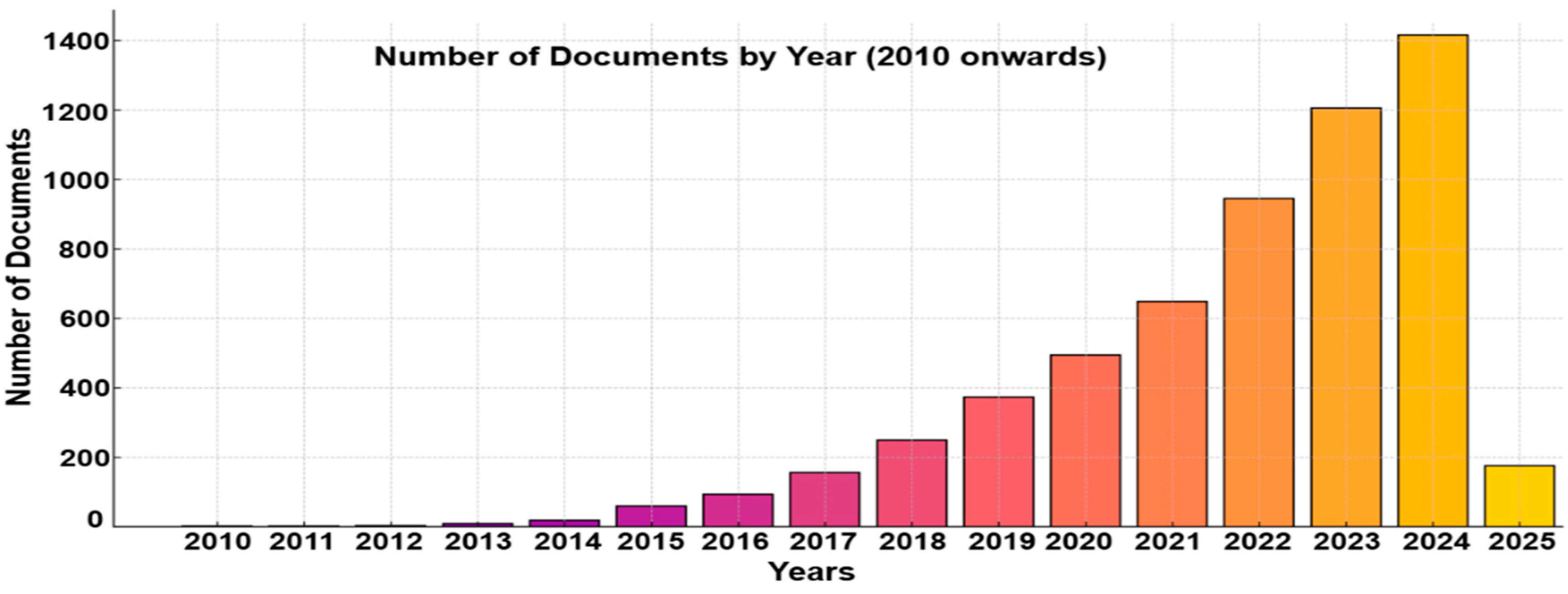
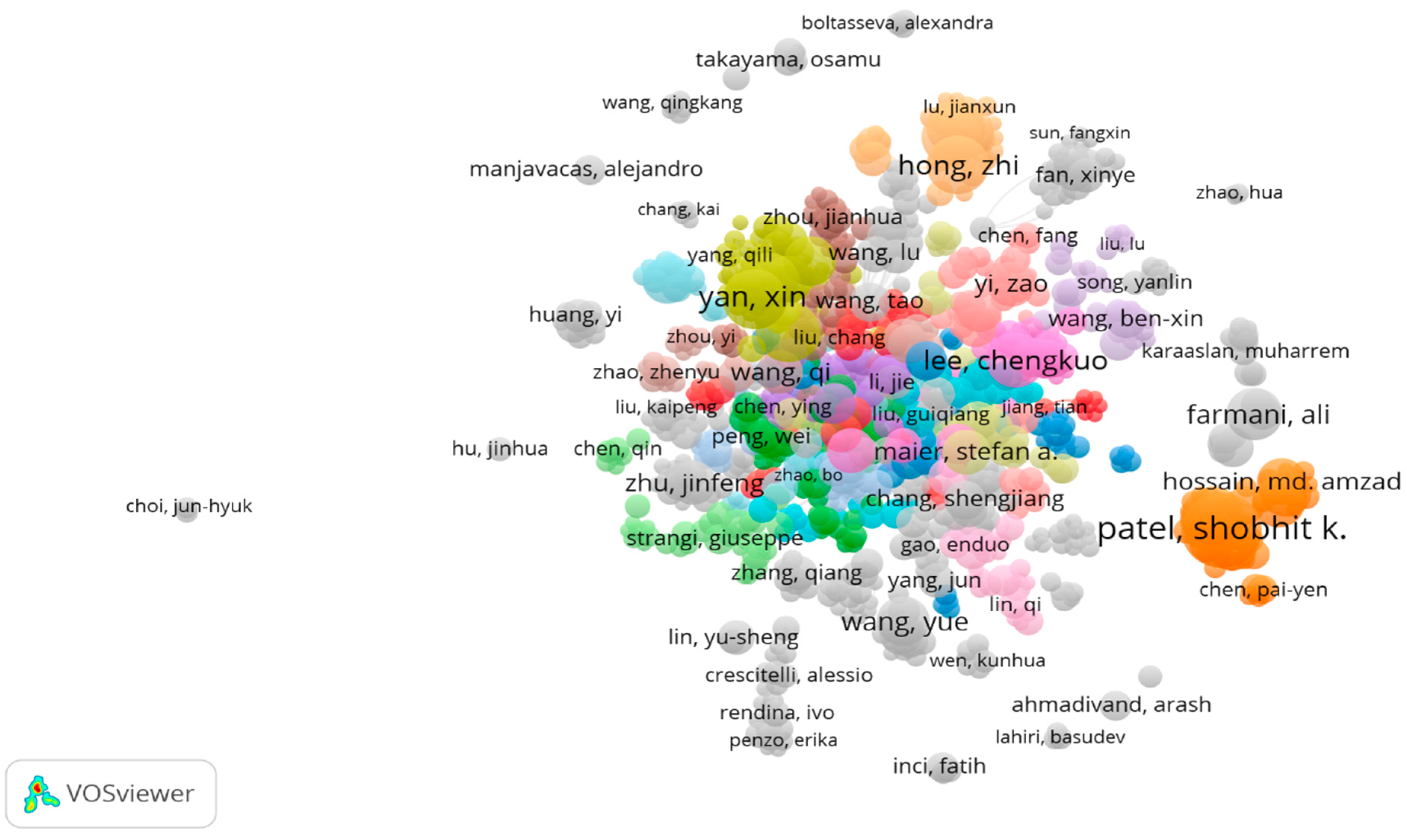

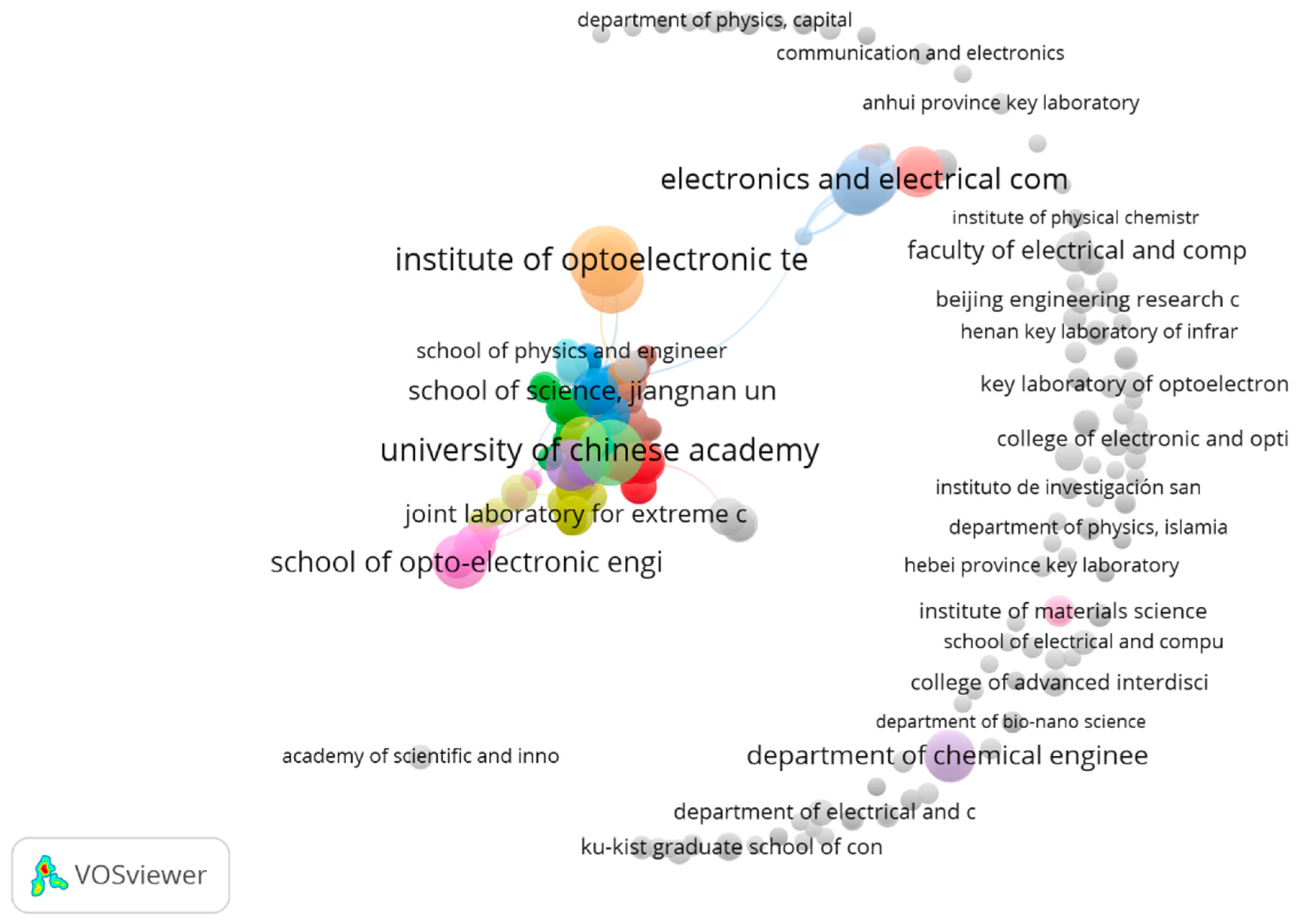

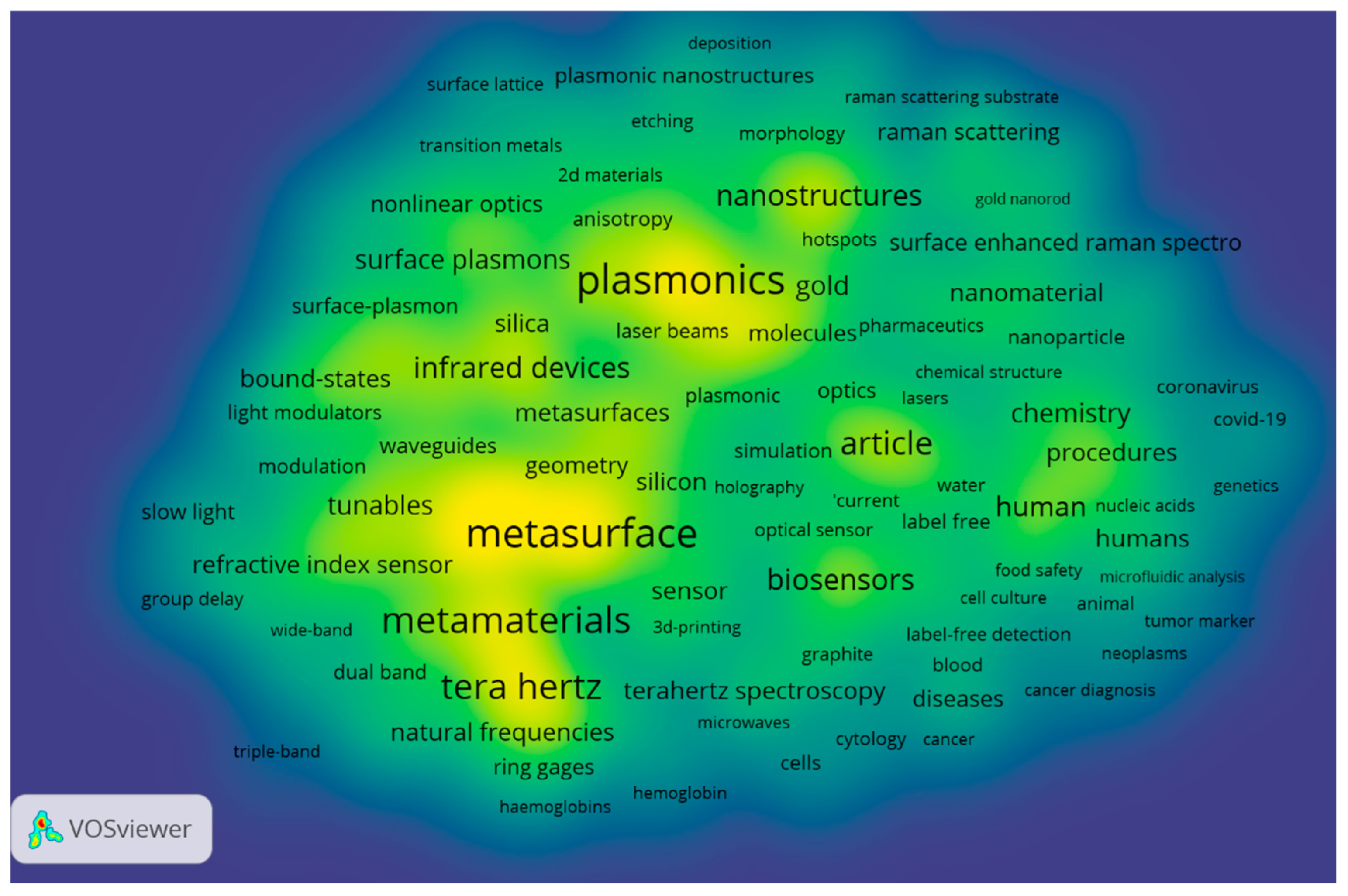


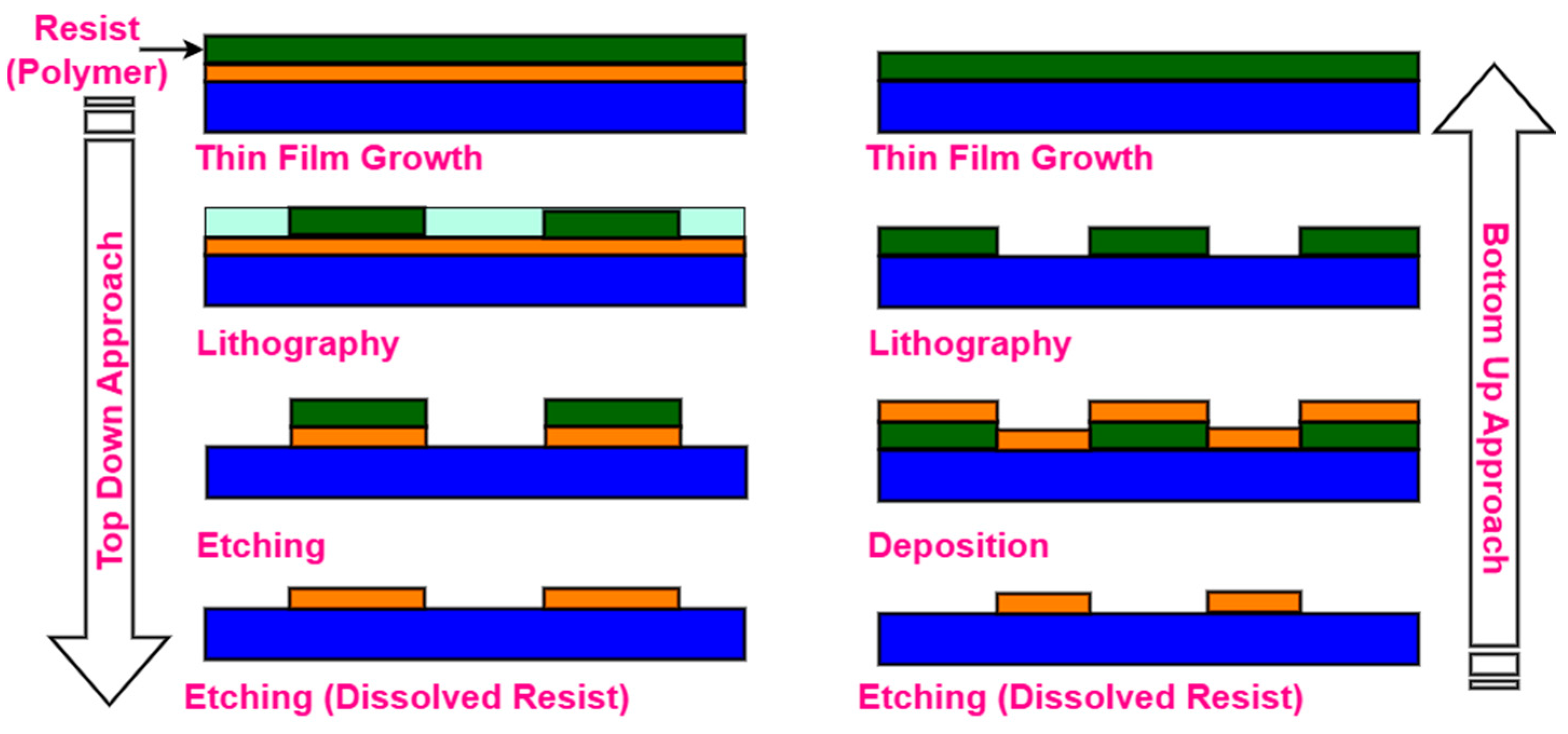
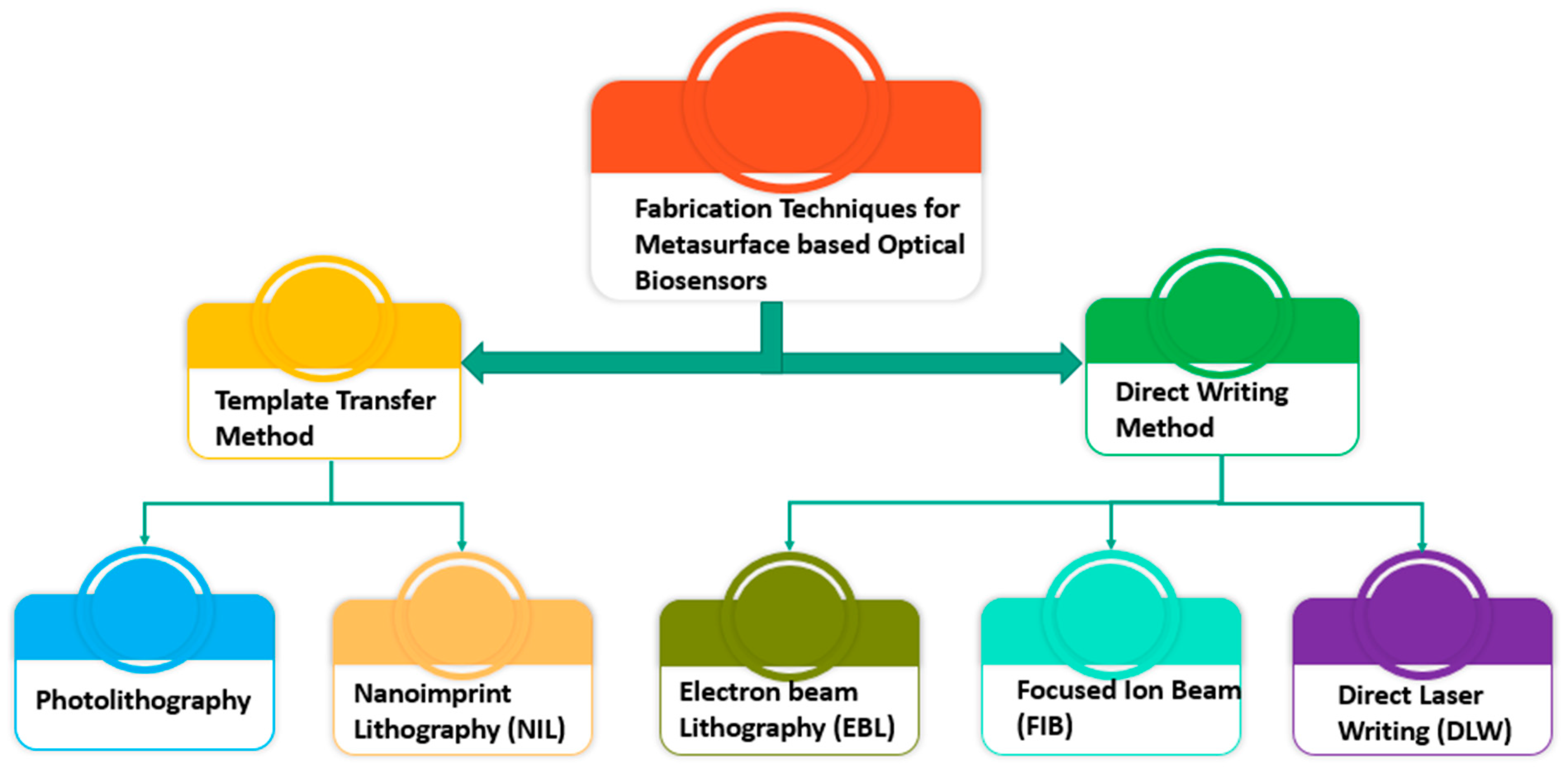
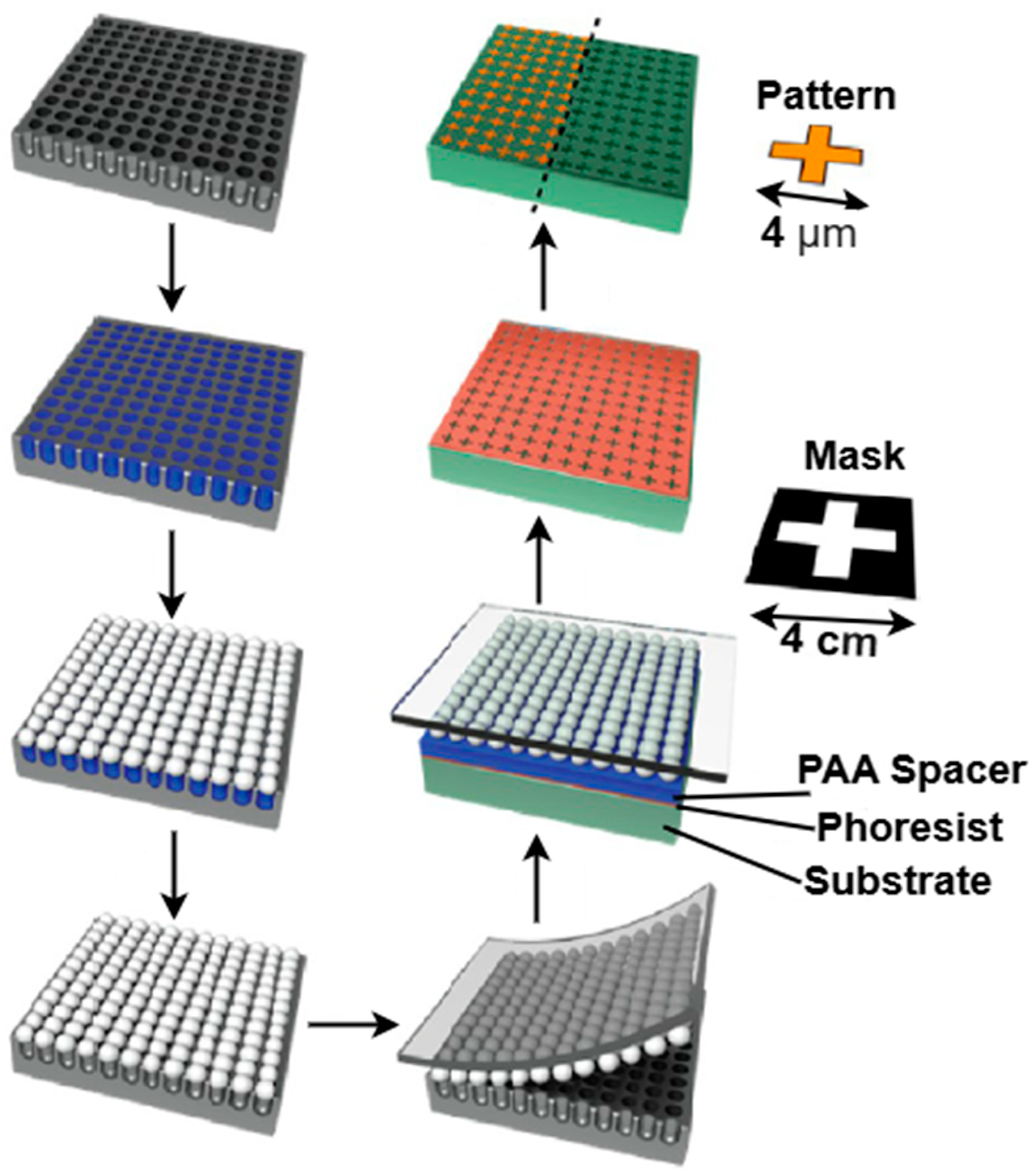
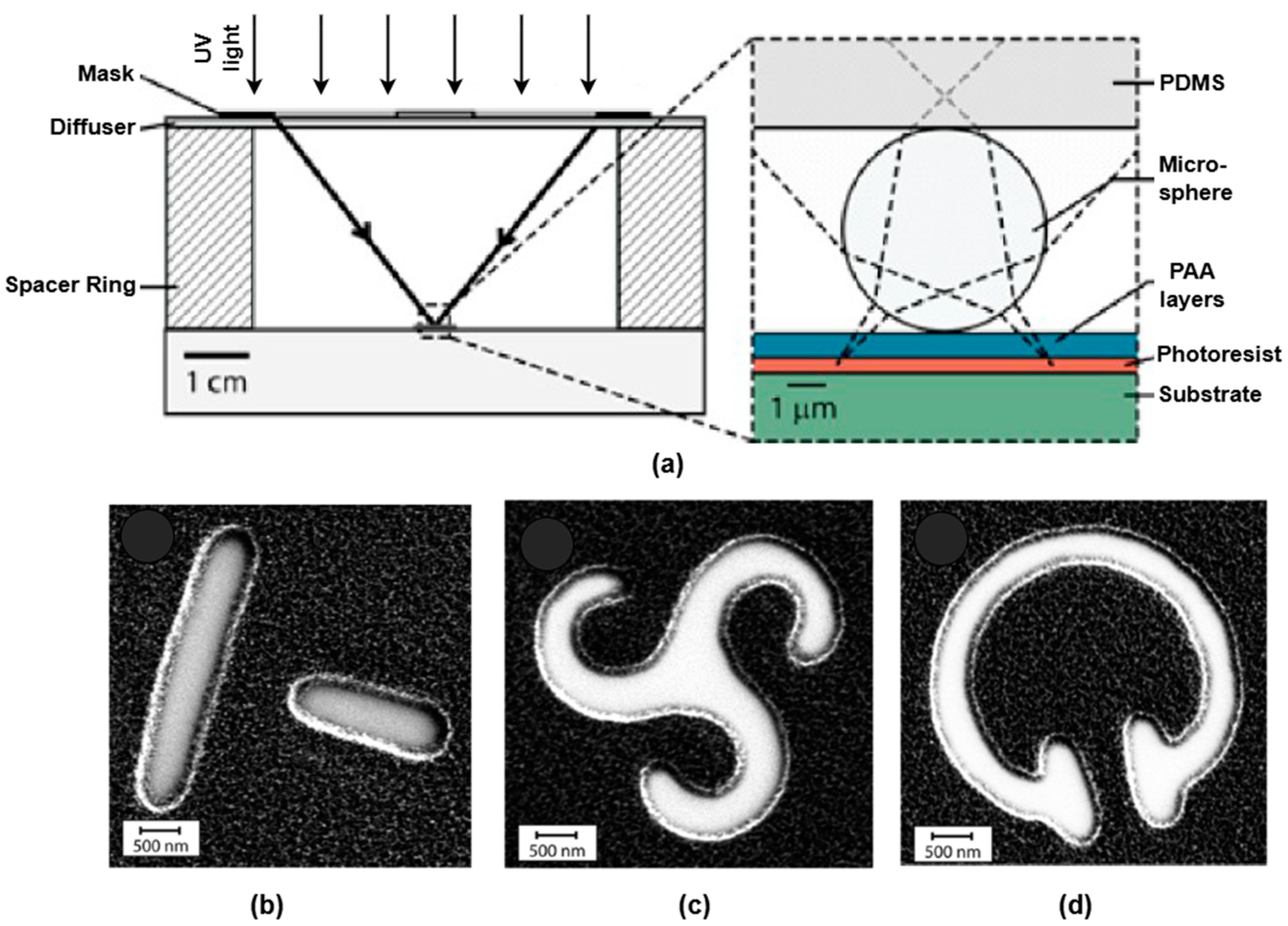
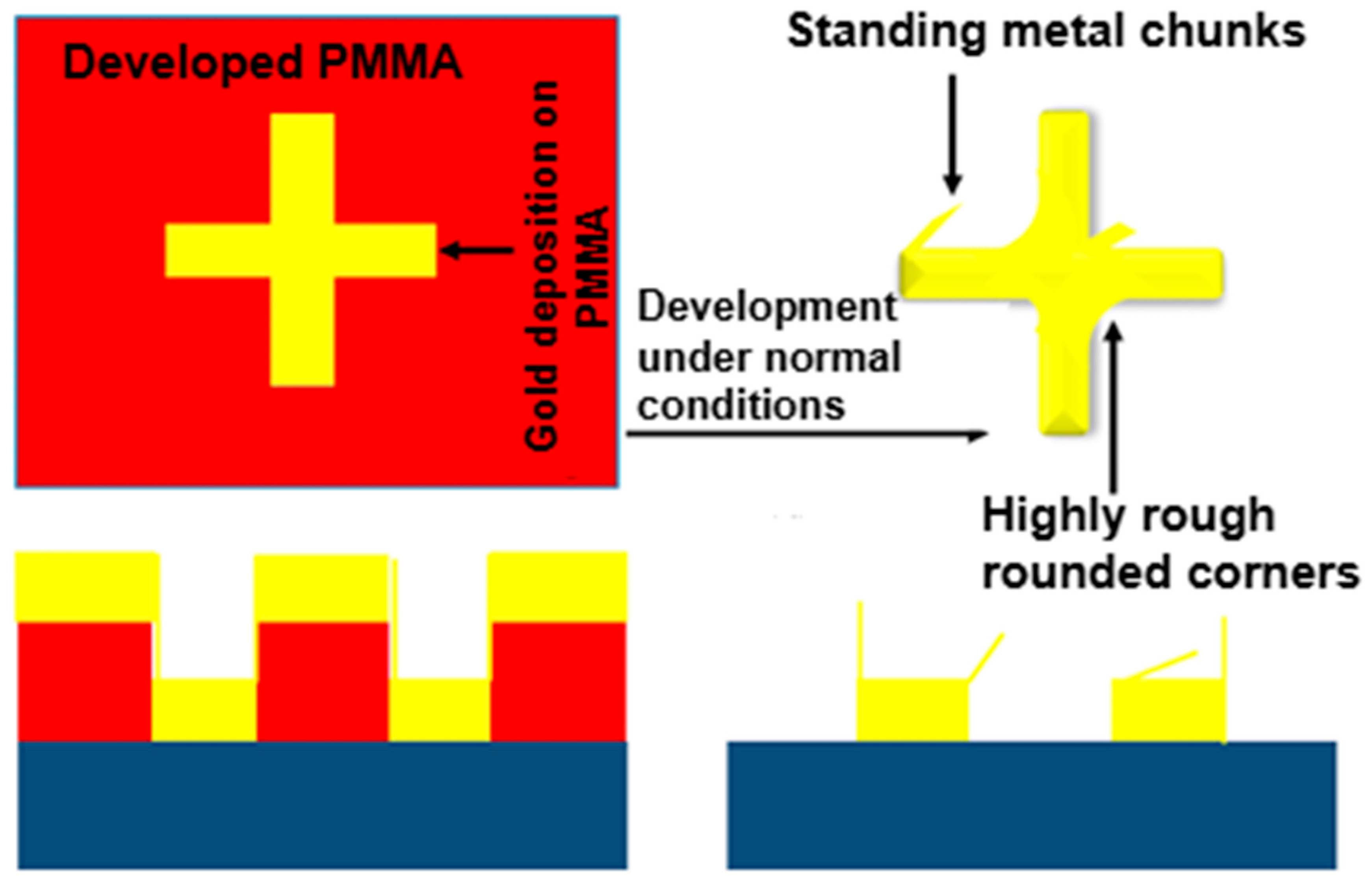
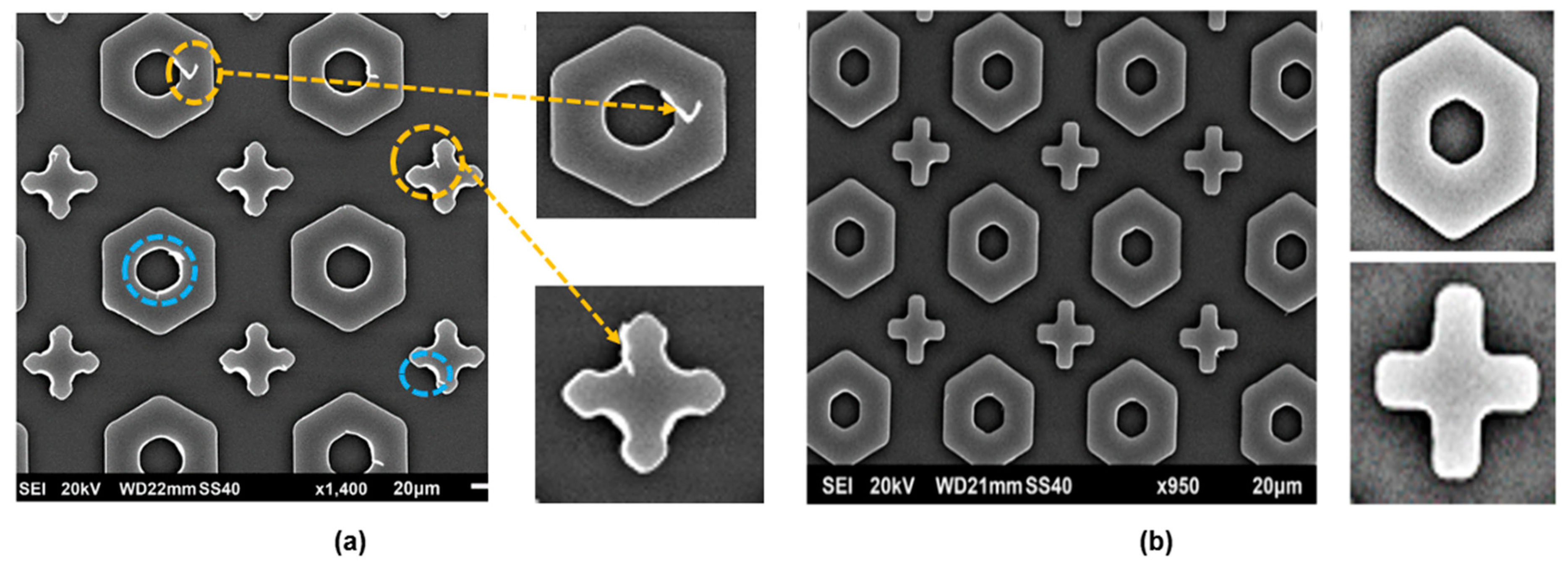
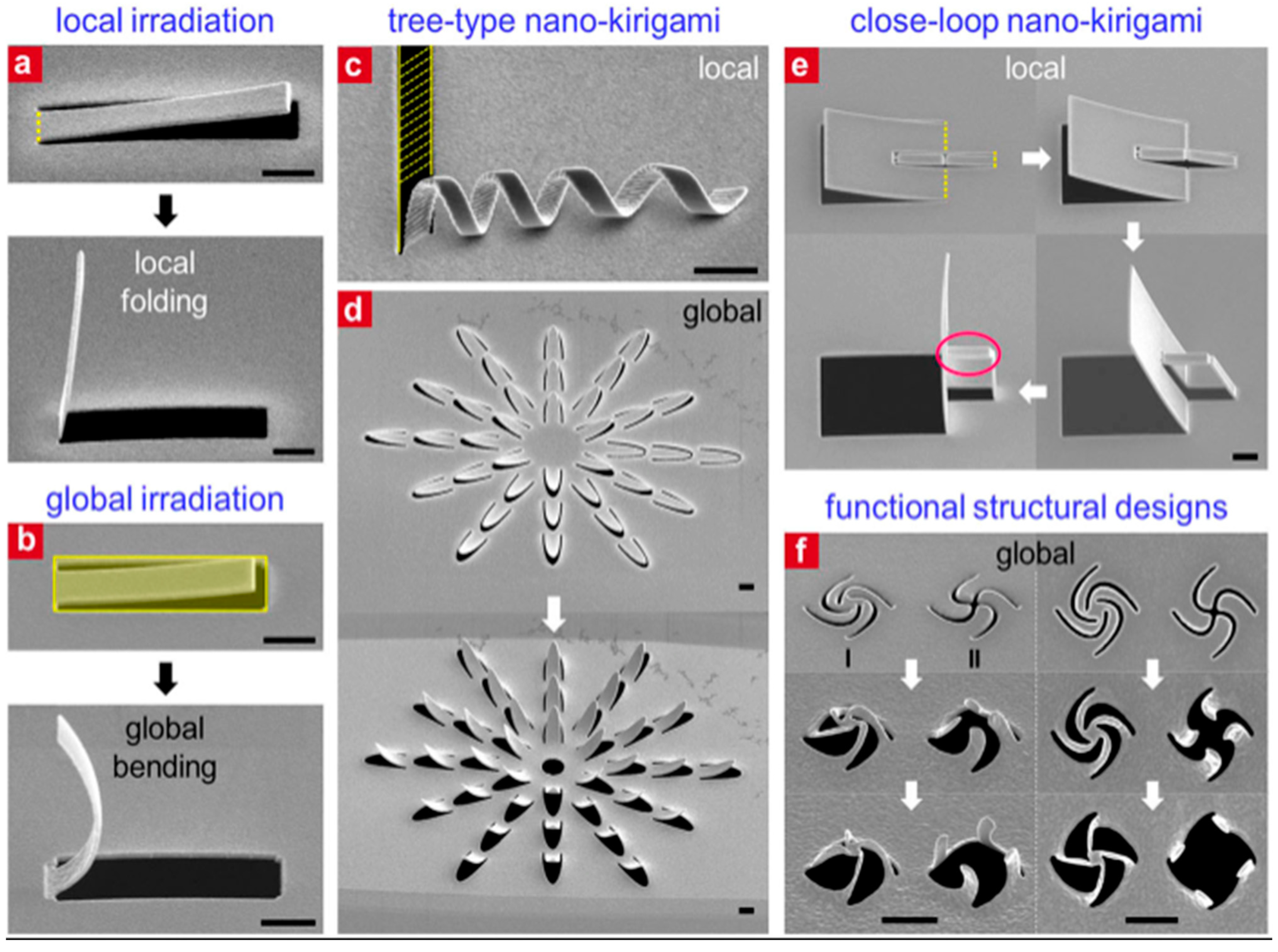
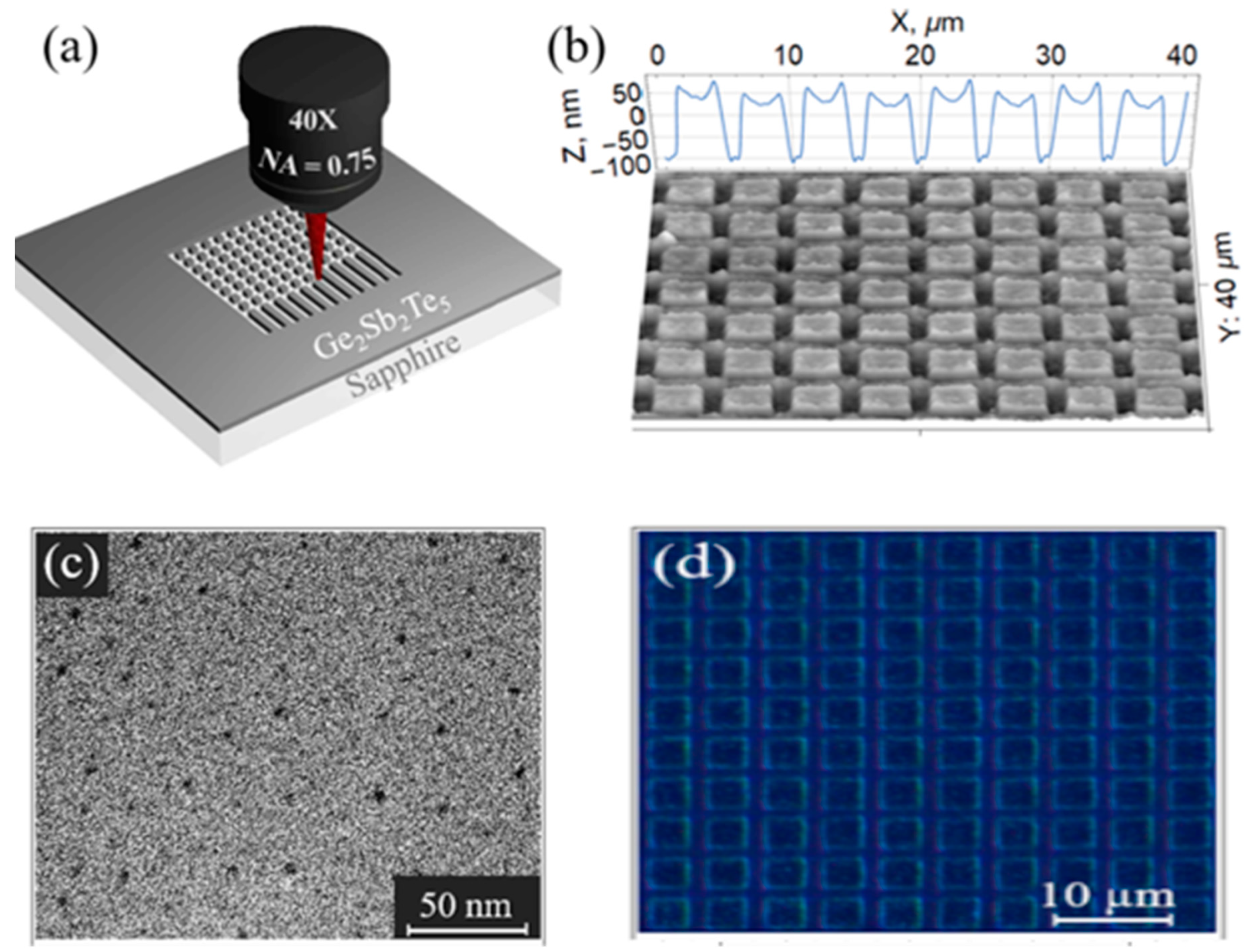


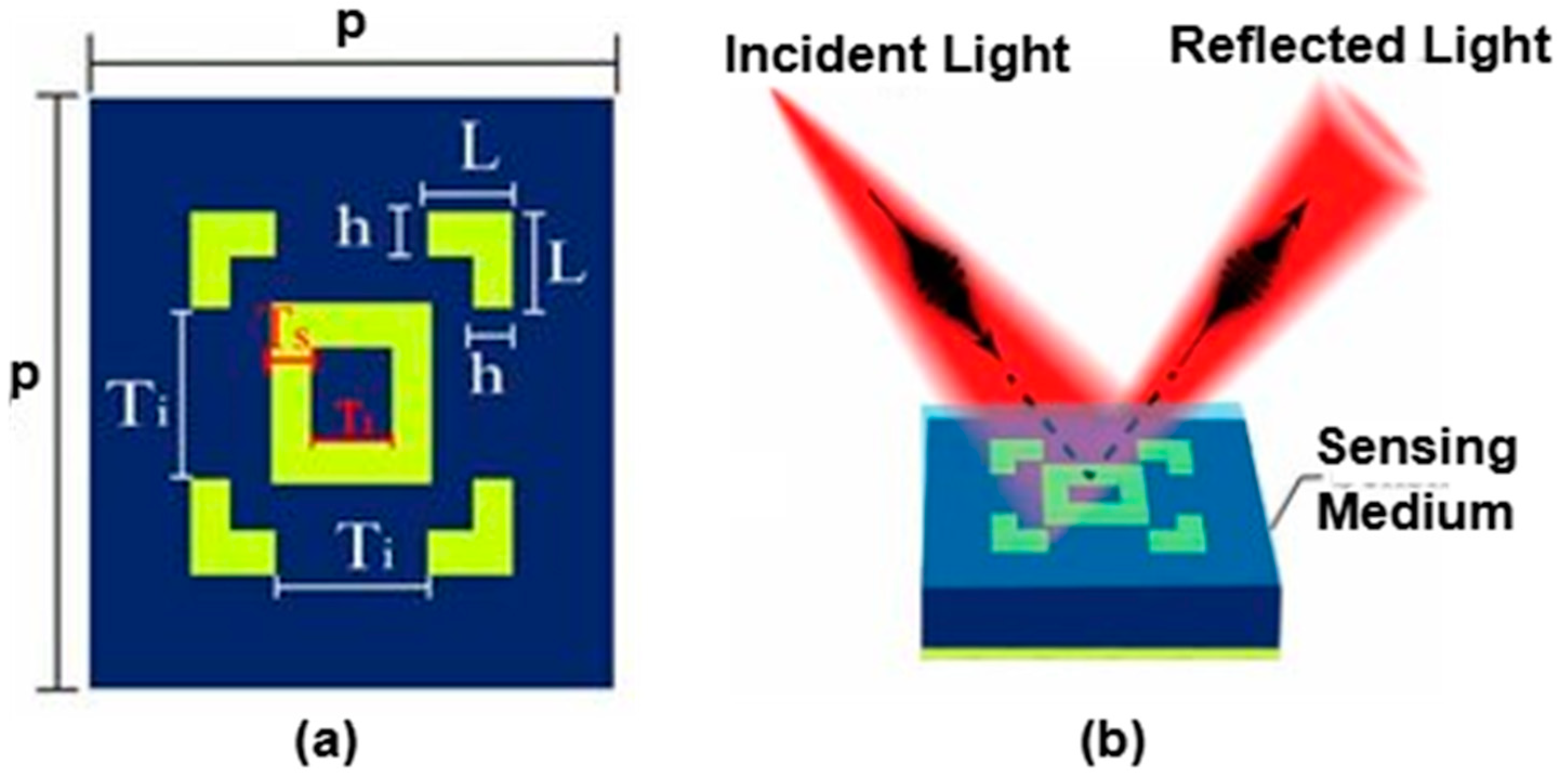
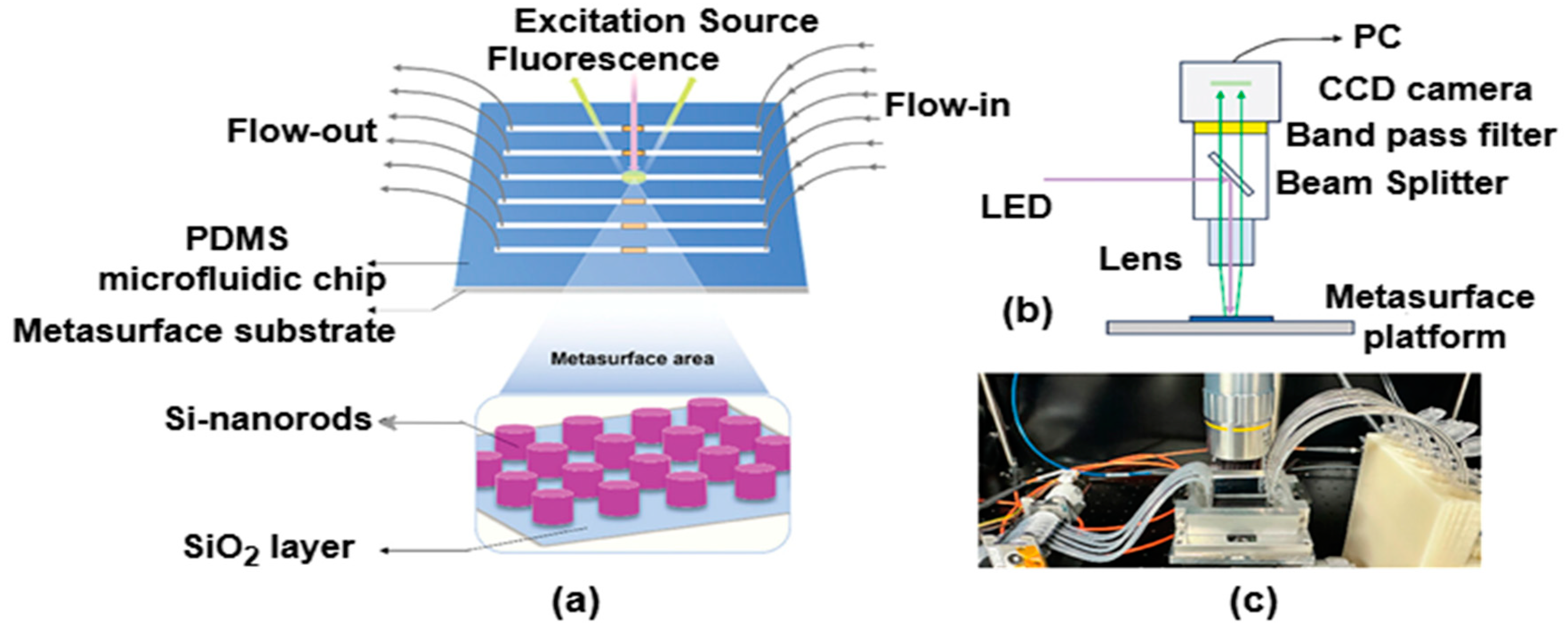
| Author | Documents | Citations | Total Link Strength |
|---|---|---|---|
| Patel, Shobhit k. | 74 | 77 | 32 |
| Yan, Xin | 49 | 71 | 64 |
| Yao, Jianquan | 48 | 104 | 56 |
| Hong, Zhi | 45 | 174 | 97 |
| Liang, Lanju | 45 | 314 | 68 |
| Wekalao, Jacob | 45 | 198 | 32 |
| Jing, Xufeng | 44 | 92 | 109 |
| Lee, Chengkuo | 41 | 1056 | 49 |
| Li, Chenxia | 41 | 135 | 106 |
| Fang, Bo | 37 | 243 | 100 |
| Country | Documents | Centrality | Citations | Total Link Strength |
|---|---|---|---|---|
| China | 2908 | 1 | 126 | 594 |
| United States | 827 | 0.28 | 1786 | 464 |
| India | 513 | 0.18 | 51 | 176 |
| South Korea | 280 | 0.1 | 221 | 118 |
| Germany | 271 | 0.09 | 21 | 203 |
| Iran | 260 | 0.09 | 9 | 52 |
| United Kingdom | 242 | 0.08 | 1458 | 239 |
| Italy | 225 | 0.08 | 9532 | 124 |
| Russian Federation | 225 | 0.08 | 427 | 103 |
| Singapore | 221 | 0.08 | 740 | 211 |
| Institute/Organization | Documents | Centrality | Citations | Total Link Strength |
|---|---|---|---|---|
| Institute of Optoelectronic Technology | 52 | 1.0 | 370 | 35 |
| University of Chinese Academy of Sciences | 47 | 0.9 | 30 | 18 |
| Center for Research | 43 | 0.83 | 41 | 35 |
| Electronics and Electrical Communications Engineering Department | 40 | 0.77 | 7 | 60 |
| Department of Electrical and Electronic Engineering | 33 | 0.63 | 30 | 58 |
| School of Opto-Electronic Engineering | 32 | 0.62 | 64 | 12 |
| Department of ECE | 30 | 0.58 | 118 | 57 |
| Department of Chemical Engineering | 28 | 0.54 | 355 | 21 |
| Department of Computer Engineering | 28 | 0.54 | 236 | 1 |
| Wuhan National Laboratory for Optoelectronics | 27 | 0.52 | 149 | 7 |
| Source Journal | Documents | % Count | Citations | Total Link Strength |
|---|---|---|---|---|
| Optics Express | 325 | 5.56 | 231 | 311 |
| IEEE Sensors | 151 | 2.58 | 1764 | 184 |
| Advanced Optical Materials | 148 | 2.53 | 18 | 2 |
| Nanophotonics | 136 | 2.33 | 71 | 227 |
| Plasmonics | 134 | 2.29 | 3272 | 84 |
| Optics Communications | 123 | 2.10 | 6347 | 110 |
| Scientific Reports | 104 | 1.78 | 386 | 38 |
| Optics and Laser Technology | 103 | 1.76 | 33 | 103 |
| Nanomaterials | 101 | 1.73 | 394 | 50 |
| ACS Photonics | 96 | 1.64 | 49 | 109 |
| Reference | Structural Configuration | Application | Key Characteristics |
|---|---|---|---|
| [97] |
|
|
|
| [98] |
|
|
|
| [99] |
|
|
|
| [109] |
|
|
|
| [100] |
|
|
|
| [110] |
|
|
|
| [101] |
|
|
|
| [102] |
|
|
|
| [103] |
|
|
|
| [104] |
|
|
|
| [105] |
|
|
|
| [106] |
|
|
|
| [108] |
|
|
|
Disclaimer/Publisher’s Note: The statements, opinions and data contained in all publications are solely those of the individual author(s) and contributor(s) and not of MDPI and/or the editor(s). MDPI and/or the editor(s) disclaim responsibility for any injury to people or property resulting from any ideas, methods, instructions or products referred to in the content. |
© 2025 by the authors. Licensee MDPI, Basel, Switzerland. This article is an open access article distributed under the terms and conditions of the Creative Commons Attribution (CC BY) license (https://creativecommons.org/licenses/by/4.0/).
Share and Cite
Kumar, S.; Singh, H.; Singh, D.K. Metasurfaces in Optical Biosensing: Revolutionizing Detection Techniques and Shaping the Future. Photonics 2025, 12, 360. https://doi.org/10.3390/photonics12040360
Kumar S, Singh H, Singh DK. Metasurfaces in Optical Biosensing: Revolutionizing Detection Techniques and Shaping the Future. Photonics. 2025; 12(4):360. https://doi.org/10.3390/photonics12040360
Chicago/Turabian StyleKumar, Sunil, Harbinder Singh, and Dhiraj Kumar Singh. 2025. "Metasurfaces in Optical Biosensing: Revolutionizing Detection Techniques and Shaping the Future" Photonics 12, no. 4: 360. https://doi.org/10.3390/photonics12040360
APA StyleKumar, S., Singh, H., & Singh, D. K. (2025). Metasurfaces in Optical Biosensing: Revolutionizing Detection Techniques and Shaping the Future. Photonics, 12(4), 360. https://doi.org/10.3390/photonics12040360





